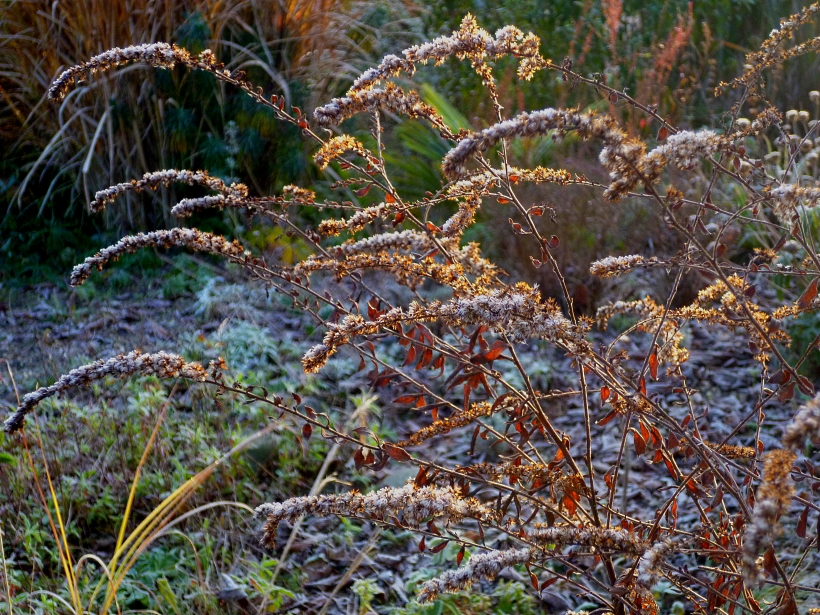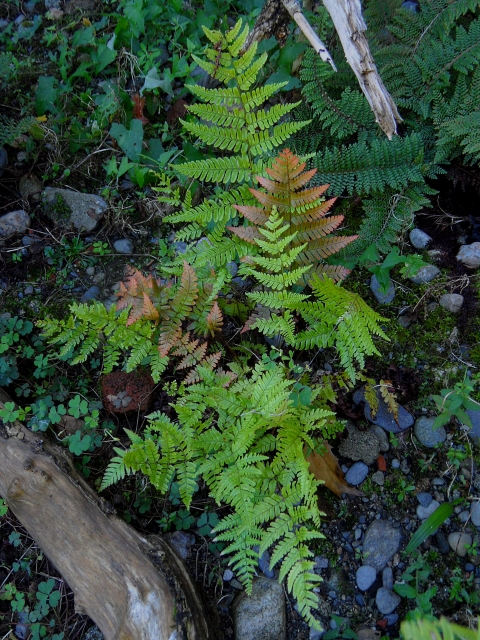
Every season or so, I run out of puff on the blog front. It’s a strange business blogging. You are, of course, largely talking to yourself, unless you have very vociferous readers, and you can end up boring yourself. So I am back after having well and truely bored myself for the last three months! It was only a few moments ago that I suddenly thought, ‘I could write something right now’ and thus the boredom was vanquished.
So, this article is about the turning of the season, and what’s popping into my head, and being delivered for next year now. The Colquhounia coccinea has been absolutely magnificent this year, now in it’s 4th year, but…incredibly strong summer winds forced it into an amost 45 degree position, and brought it very close to throttling the rest of the planting in front of it. It is such a good late summer into autumn flowerer, though honestly not an oil painting otherwise as it has such a straggly form. So what to do?
Eventually I took drastic action. I have reduced it in size to just over a metre all round from what was nearly a 3m shrub, and am hoping to persuade Andy to make a couple of super-sized rebar supports for it, with which I plan to pin it back closer to the wall next Spring. It’s a judgement call doing a prune like this in the Autumn, but I reckoned it was too susceptible to root rock with inevitable winter and spring winds, and also I needed to rethink what to plant in front of it. So time will tell.
So, among the plants it had brought down with it were Rudbeckia subtomentosa ‘Henrik Eilers’ and Solidago rugosa ‘Fireworks’. Both are yellow flowerers, and I have a very soft spot for yellow, and do interesting things when they flower. ‘Henrik Eilers’ is tall and wafty, with delicate quill shaped petals, and ‘Fireworks’ does what it says on the tin, flowering like a firework in delicate, arching sprays. Both, for my money, the best in class.

As you can see, both were working their way to the horizontal from the pressure of the Colquhounia. One of them had to go to give the other one more of a chance, assuming that the rebar manages to control the Colquhounia. So the Solidago, already reforming itself into a nice clump for next year, is to be replanted in the front garden, as it is a real favourite of mine.
I have taken another risk, and replanted a Daphne ‘Eternal Fragrance’ that was too far into the shade and was busily contorting itself. Daphnes don’t like being moved. I know that, but it makes such a good, dense, rounded shrub that I wanted to give it another try in a sunnier position at the very front of the Colquhounia area. I moved it a week ago, we have had mild temperatures and a lot of rain, and so far it is looking perfectly fine. Phew. It flowers almost all year round, and though a slow grower, the other one that I have, bought at the same time, is now a well rounded Im bush. The flowers are exquisite and beautifully scented, the photograph below is of my pink one in Tostat.

There are always one or two casualties, or near casualties, at the end of a hard summer season. The Skimmia japonica ‘Kew White’ that looked so good last Spring was yellowing and looking very fed up. Fearing the return of the dreaded vine weevil, I dug it up and checked the roots- all fine, fortunately. So the likeliest reason is lack of water, and as we are more neutral than acidic, maybe we are too neutral for it. Not sure which, but I have moved it back into the shadier section, under a Mahonia, and as a temporary first aid measure, bulked up the soil with ericaceous compost. Another time will tell situation.

Only partial sun and tree cover also tortured my Physocarpus ‘Diable d’Or’. Physocarpus is such a good shrub, good shape, great spring colour in the new leaves, pretty viburnum-like flowers and then, depending on conditions, great autumn colour, and generally as tough as old boots. So, they have also been trimmed back, lifted and will find a new home in the front garden.
And, nothing if not living dangerously, I am replacing them with two Euphorbia mellifera that I have tenderly grown from seed over the last 2 years. Am I mad? Maybe not. Books and sites indicate that free-draining poor soil is their main requirement and that they will accomodate some semi-shade. That’s the part I am banking on. Whatever happens, they probably won’t die, as Euphorbias are pretty indestructible. And so the big gamble starts.


My last gamble, (well, probably not in reality if I am being truthful) is planting this lovely Berberis insolita in the damp and then dry semi-shade in the summer, part of the Barn Garden. This has glossy, elegant spined leaves, pinkish new growth and, as yet unseen, pale yellow flowers that look a little Japanese Quince-like. It should love these conditions, I hope. You have to try, don’t you?!



























